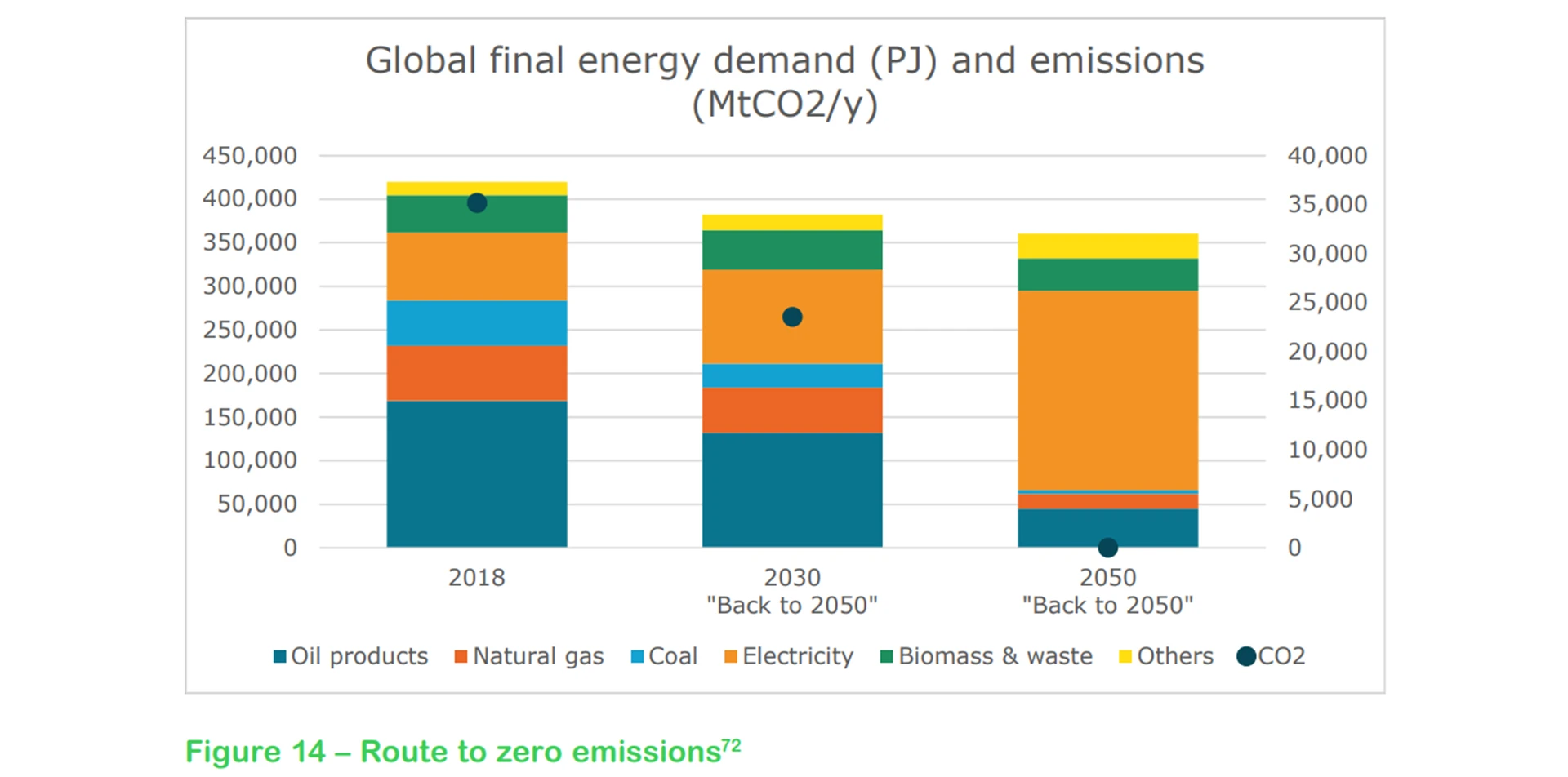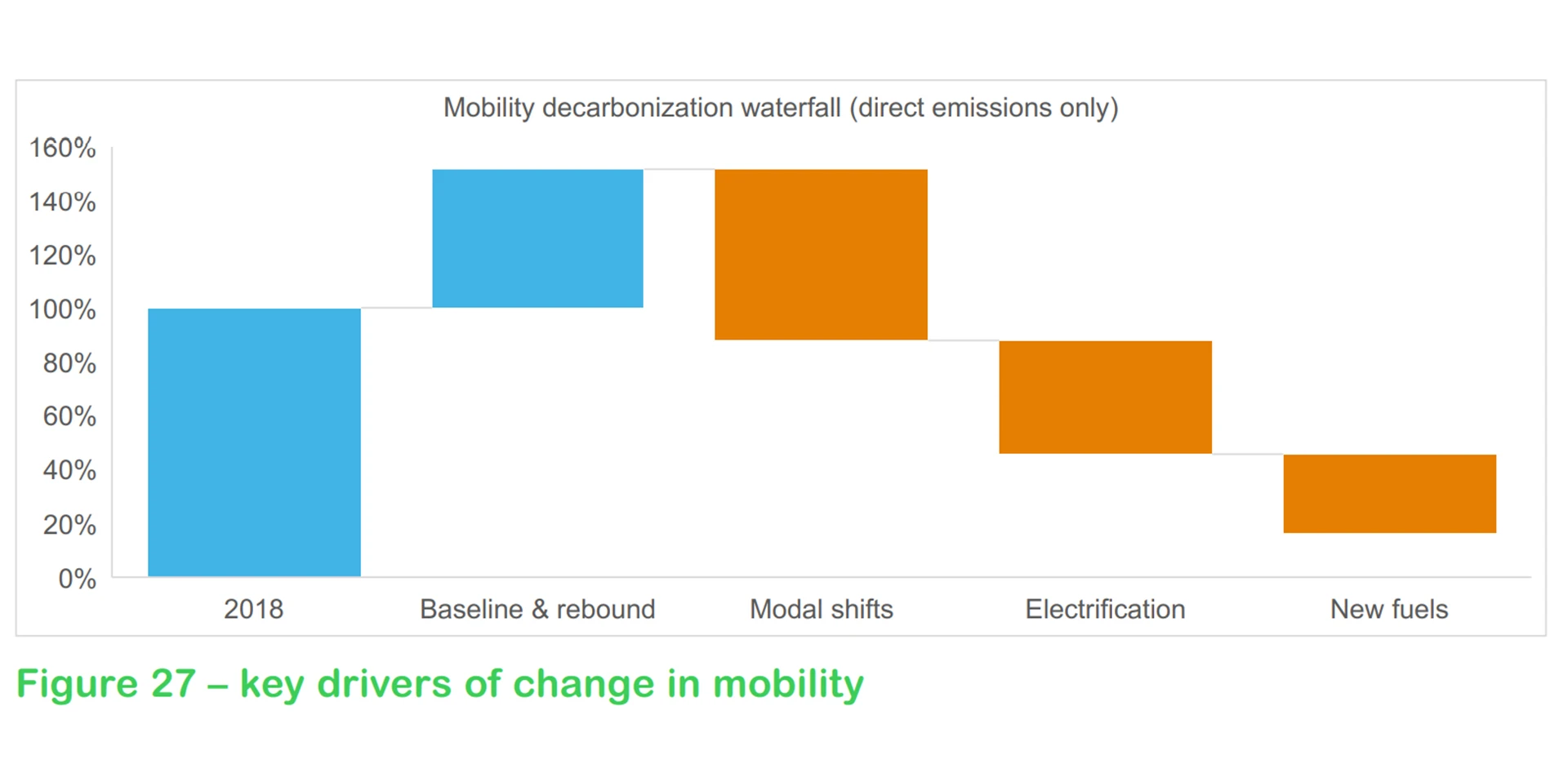The project
Enerdata was selected by Schneider Electric to provide a long-term analysis of energy consumption, both worldwide and in key countries (China, India, United States). The study aimed to inform the multinational’s long-term strategy, and its position as a think tank in the debate over the global energy transition.

Strategic stakes
To shape and operationalise its energy and climate strategy, Schneider Electric required a forecasting model capable of simulating proactive hypotheses that would lead to a net-zero emissions target by 2050, with a global temperature rise limited to 1.5°C.
The stake was threefold.
First, Schneider Electric needed perspective on its detailed vision of energy demand, with aggregated insights and a multi-energy approach to provide a larger picture of energy trends and decarbonisation levers by sector, at world and key country levels.
Second, Schneider Electric bucked the trend of most energy and climate forecasting scenarios, settling for a 2°C to 2.5°C temperature increase by 2050. To this end, the team sought highly customisable scenarios enabling the simulation of major technological and behavioural disruptions, as well as specific variables such as 3D-printer pooling or the penetration of Personal Rapid Transit (PRT).
Third, while the most ambitious scenarios typically focus on occidental countries, Schneider Electric aspired to expand both its baseline and net-zero target analyses at a global level.
- Enerdata’s global coverage of all energies allowed Schneider Electric to enlarge their analysis of energy consumption to world level. Our ability to provide the big picture is fuelled by our frequent participation in international consortiums, complementing local knowledge and optimising available data.
- Enerdata’s expertise in advanced energy modelling tools underlies the design of three bespoke scenarios for Schneider Electric, fitted to its ambitions. Our POLES-Enerdata model was customised to incorporate Schneider Electric’s detailed vision with Enerdata’s aggregated insights, producing fine-tuned results for each sector and geographic unit.
- Enerdata’s vast knowledge of energy efficiency and demand worldwide, acquired through the Odyssee Project and extended with our EnerDemand service, enabled our team to suggest and simulate impactful efficiency and sufficiency levers in the scenarios developed for Schneider Electric.
- Enerdata’s commitment to close client relationships led our experts to continuously exchange with Schneider Electric’s team and use a series of workshops to refine a methodology perfectly fitted to the client’s needs.
- Development of customised energy and climate scenarios
- Starting from a baseline scenario that reflected the default evolution of global energy systems, Enerdata and Schneider jointly developed two customised scenarios:
- The “New Normal” scenario depicts a future where the necessary transformations in energy demand occur through innovations, without relying too much on specific policies
- The “Back to 2050” scenario is a backcasted scenario exploring the extent to which policies will have to bridge the gap to achieve net-zero emissions globally by 2050
- Production of a comprehensive set of assumptions for each region and in each scenario, on a detailed sectoral level (e.g., level of electrification, disruptions on demand, cross-sectoral interactions, etc.)
- Integration of the assumptions into our POLES-Enerdata model
- Refinement and calibration of the model to produce the final long-term energy scenarios
- Starting from a baseline scenario that reflected the default evolution of global energy systems, Enerdata and Schneider jointly developed two customised scenarios:
- Cooperative workshops
- Co-design of energy and climate hypotheses for each sector (Industry, Transport, Residential) and each region, involving experts from Enerdata and Schneider Electric
- Refinement of the hypotheses based on feedback from Schneider Electric’s Mirror Committee, comprised of globally recognised experts, before final validation
- Consolidation of the study’s report
- Production of result files
- Delivery of extensive analyses and results for the study’s report
- Detailed tables with sectoral-level assumptions by region
- Detailed global energy and emissions balances by scenario
- Study report – Back to 2050
- The report was publicly released by Schneider Electric’s Sustainability Research Institute at the time of COP26, to renew discussions and commitments towards the achievement of global Net-Zero by 2050
Global final energy demand

Mobility decarbonisation waterfall

“We selected Enerdata for its long-lasting experience in developing energy models for long-term scenarios. In addition, Enerdata has also a specific and internationally recognised expertise in energy demand analysis.
Enerdata's contribution was essential to the success of our project. They developed the advanced modelling tools while, at Schneider Electric, we could focus on the selection of the many assumptions to be inserted in the models.
Enerdata are easy to work with. Their teams are very professional, and their mindset is always positive.”
 Energy and Climate Databases
Energy and Climate Databases Market Analysis
Market Analysis